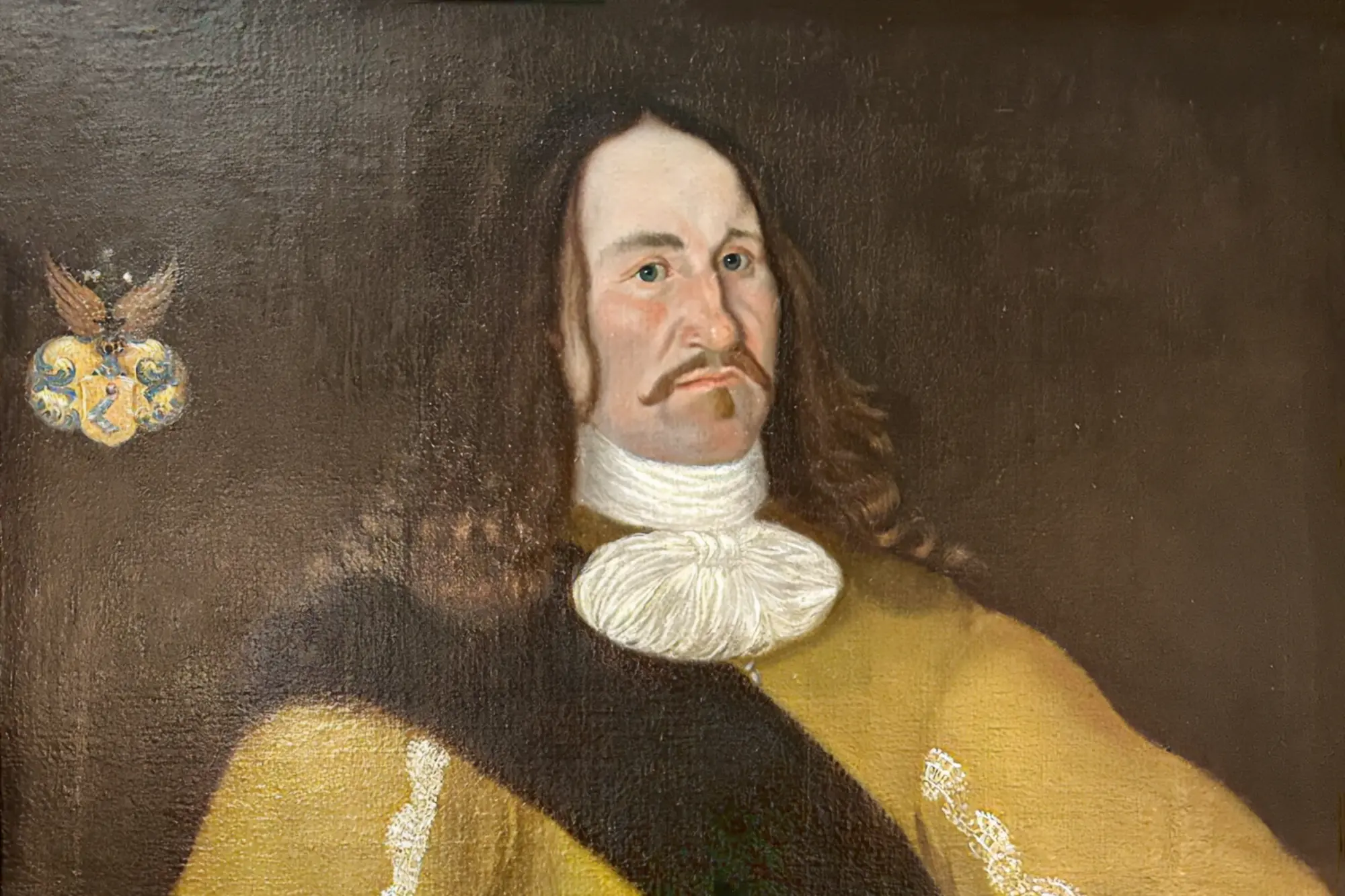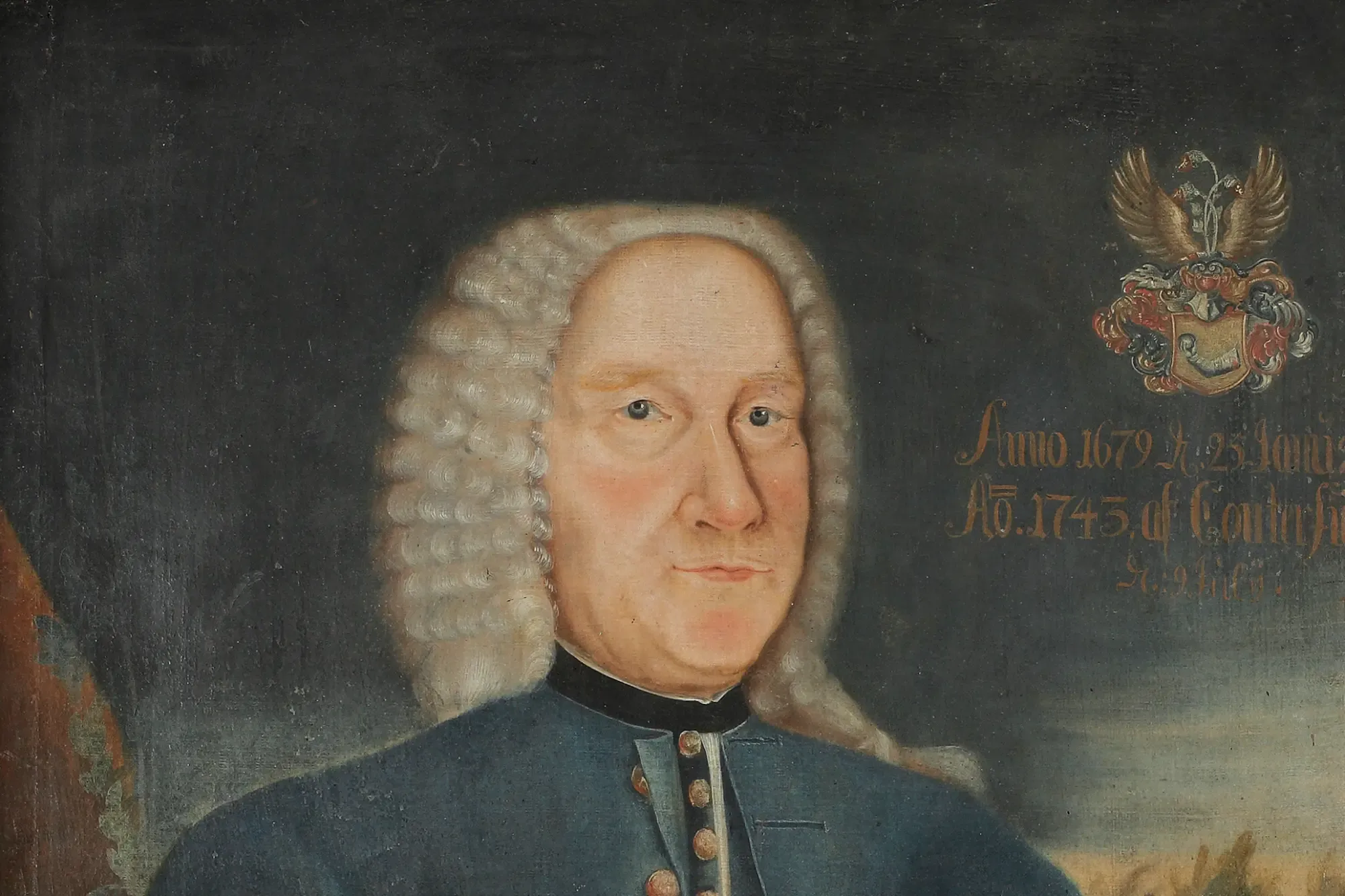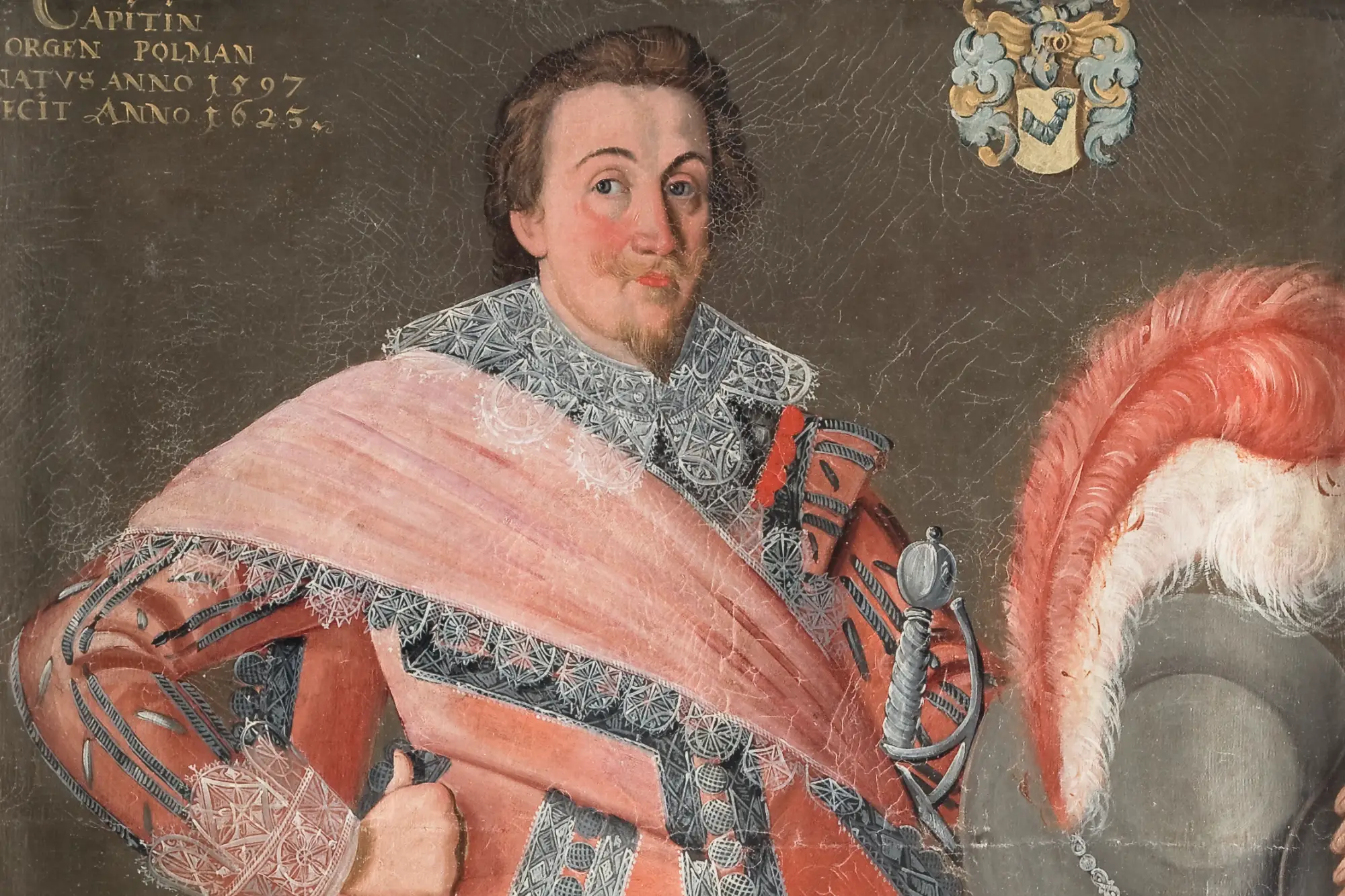Jöran (sometimes spelled Göran) Påhlman was the fourth child and second son of former Småland cavalry master Johan Påhlman and his wife Margareta Silfversparre. Born 15 December 1670 at Ugglansryd, he was the older brother of Claes and Carl Gustaf Påhlman.
In 1679, Jöran was enrolled at the local school in Växjö. Like many young men his age, he volunteered in the military, specifically the Swedish Life Regiment, between 1685-1686, where he was a corporal. Two years later, he went into Dutch service, earning the rank of sergeant. He presumably fought in the Battle of Fleurus in Oudenarde on 1 July 1690, during the War of the Grand Alliance (1688–1697). Dutch and Allied forces under the command of the Prince of Waldeck faced French forces and lost.[[1]]
Returning to Sweden in 1694, he joined the Kronoberg regiment as a corporal, where he had an illustrious career. He became a sergeant again in July 1696, joining his brother Claes in ranks. He further rose to the positions of field sergeant (1697), ensign (1700), lieutenant (1702), staff/second captain (1703), and company commander/first captain (1704).[[2]]
Jöran not only shared a name with his grandfather, but also shared with him an unfortunate tendency to cause drunken disturbances at inns. On the night of 24 and 25 November 1695, he visited Nygård Inn in the company of his brother Claes and Sergeant Sven Stråle. The details of what happened are unclear, but the visitors caused considerable damage at the property, with Jöran personally credited for tearing down and breaking “two pieces of bars by the fireplace”, to which he confessed. Other things broken by the party included “candlesticks, tankards, and mugs, as well as windows". They were fined 40 marks of silver each by a court in Ljungby, in accordance with the royal inn ordinance of 1664 (#41).[[3]]
Ironically, in 1698, Jöran became passionate about bringing legal claims against two tenants on two of his properties on charges of building decay (huußeröta). The first case involved Johan Simonsson, residing at Sunnerå, against whom a case had already been brought and a fine of 30 daler in silver levied; Jöran's aim was to claim it from guarantors as Simonsson was unable to pay. The conclusion was that a suitable resident would be found for the farmstead to bridge the loss.[[4]] The second case was against Sven Bondesson and involved the manor at Väraboda, where he had lived for 19 years but had neglected to invest in its upkeep as confirmed by an inspection. The ideal investment for the period was 86 silver dalers; however, the court deducted the cost of repairs already undertaken. The final amount is missing from the records.[[5]]
A year later, Jöran found himself the guilty party, tattled on by none other than his own mother, for having “illicit intercourse” with the unmarried Kierstin Jönsdotter at Ugglansryd. Both parties were fined, with Jöran required to pay double the amount at 40 marks, and both were required to undergo church discipline involving public shaming and subsequent professing of repentance.[[6]]
Following his promotion to commander, Jöran was stationed at Posen, located in present-day Poland, in 1704.[[7]] He fought in the Battle of Fraustadt in February 1706 during the Great Northern War, which was a resounding victory for Sweden against a much larger Saxon-Polish-Russian army. He was also part of Sweden's Siege of Veprik in January 1709, a victory following Russian surrender.
However, a few months later, when he fought in the decisive Battle of Poltava alongside his brother Carl Gustaf, both were captured with the majority of the Swedish army, which surrendered at Perevolochna.[[8]] The brothers were taken to Tobolsk in Siberia, where they remained exiled for over a decade, and had to serve the Russian empire.[[9]] Jöran returned from captivity in May 1722 – a year before his brother would – and was promoted to the rank of lieutenant colonel. He never married, and died at Ugglansryd two years after his return, on 17 May 1724. He was buried in the family grave in Ryssby church.
[[1]]: “War of the Grand Alliance”, Heritage History, https://www.heritage-history.com/index.php?c=resources&s=war-dir&f=wars_grandalliance; Fleurus is now in Belgium.
[[2]]: “Påhlman Nr 501.” Adelsvapen-Wiki. Adelsvapen, May 3, 2014. https://www.adelsvapen.com/genealogi/Påhlman_nr_501; Lewenhaupt, Adam. Karl XIIs Officerare Biografiska Anteckningar. Stockholm: P. A. Norstedt & Söners, 1921, p. 524-525
[[3]]: Göta Hovrätt - Advokatfiskalen Kronobergs län (G) EVIIAAAD:41 (1696-1698) Bild 150/sid 21 (AID: v206282.b150.s21, NAD: SE/VALA/0382503); Göta Hovrätt - Advokatfiskalen Kronobergs län (G) EVIIAAAD:41 (1696-1698) Bild 1610 (AID: v206282.61610, NAD: SE/VALA/0382503)
[[4]]: Göta Hovrätt - Advokatfiskalen Kronobergs län (G) EVIIAAAD:41 (1696-1698) Bild 3150 / sid 53 (AID: v206282.63150.553, NAD: SE/VALA/0382503)
[[5]]: Göta Hovrätt - Advokatfiskalen Kronobergs län (G) EVIIAAAD:41 (1696-1698) Bild 3920/sid 203 (AID: v206282.63920.s203, NAD: SE/VALA/0382503)
[[6]]: Göta Hovrätt - Advokatfiskalen Kronobergs län (G) EVIIAAAD:42 (1699-1700) Bild 1400 / sid 271 (AID: v206284.61400.s271, NAD: SE/VALA/0382503)
[[7]]: Henriksson, Håkan. “Ukrainian Cossacks and Other Prisoners of War in Sweden during the Great Northern War (1700–1721).” In Ukraine in Central-Eastern Europe, 16:247–59. Kyiv: National Academy Of Sciences Of Ukraine, 2016, p. 250; Lewenhaupt, Adam. Leonhard Kaggs Dagbok 1698-1722. Stockholm: Kungl Boktryckeriet. P. A. Norstedt & Söner, 1912, p. 59.
[[8]]: Now in Ukraine.
[[9]]: Ennes, Barthold Anders. Biografiska Minnen Af Konung Carl XII:S Krigare. Stockholm: Sohm, 1818, p. 470.



